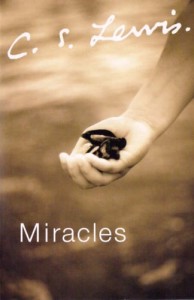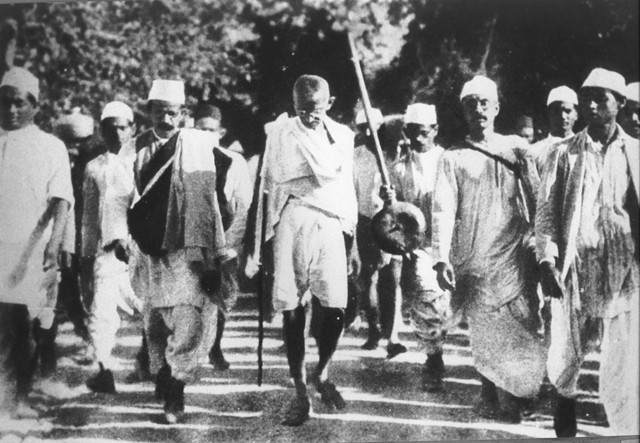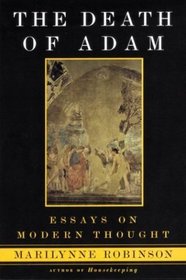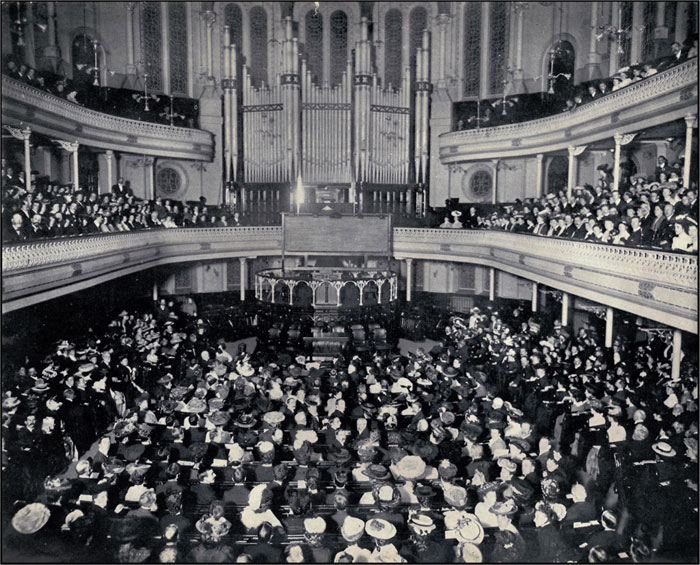Miracles
The next morning they decided that they really would go and tell the whole thing to the Professor. “He’ll write to Father if he thinks there is really something wrong with Lu,” said Peter; “it’s getting beyond us.” So they went and knocked at the study door, and the Professor said “Come in,” and got up and found chairs for them and said he was quite at their disposal. Then he sat listening to them with the tips of his fingers pressed together and never interrupting, till they had finished the whole story. After that he said nothing for quite a long time. Then he cleared his throat and said the last thing either of them expected:
“How do you know,” he asked, “that your sister’s story is not true?”
***************
This scene — and the ensuing conversation – from The Lion, the Witch, and the Wardrobe (1950) sketches out in fiction the basic situation of Miracles (1947), in which C.S. Lewis himself sits in the place of Professor Kirke and systematically addresses (sometimes demolishes) various naturalistic arguments against the plausibility of miracles. “How do you know,” he seems to ask, “that the biblical accounts are not true?” I can’t help feeling that there must have been a poignancy for Lewis in writing this scene, where the name and ambience of the logical defender of Narnia recall his naturalistic and atheistic tutor Wm. Kirkpatrick, to whom he acknowledges a great debt. It’s a reversal Lewis doubtless would have loved to see; in actuality, Kirkpatrick’s style of Naturalism is summed up in Peter and Susan’s certainty that Lucy must be insane or lying about her wardrobe experiences. Professor Kirke’s exchange with the two children constitutes the briefest of summaries of the more rigorous Miracles.
Lewis’ method is to tackle Naturalism first — which he defines as the belief that Nature is all there is, with nothing beyond her — painstakingly untangling its various assumptions and reflexes and subjecting them to rational analysis. This prologue to the main argument, where Lewis examines the biblical miracles themselves, lasts for 13 chapters on the principle that approaching the subject with a faulty philosophy will yield faulty answers. Although this book is written for laymen by the champion of accessible discussion, it’s a finely-woven tapestry of logical thought intertwined with the kind of keen imaginative insight that sets one’s own thinking on new ground.
Lewis writes as a modernist, but much of the intellectual bias he’s directed against here remains in our postmodern era, so this book is worth reading for anyone up to the challenge. I’ve had the book on my shelf for years, and was prompted to pluck it off and read it this week after watching The Life of C.S. Lewis (twice), given me by my father as a birthday present. This was the only Lewis book I own but haven’t read (though there are plenty I don’t own that I also haven’t gotten to yet). I saw from my annotations that I’d attempted the book before, but the markings end at chapter 3. I must have given up at that point.
I think of myself as a lover of philosophy, but that’s a somewhat self-indulgent judgment. It should be qualified by “in discussion with others.” Only in recent years have I developed more staying-power with the more strenuous reading — and I put this book in that category despite its non-academic nature because it’s so carefully and methodically argued. I often joke that I chose English for my field because I love stories and not textbooks. I place Miracles on the textbook shelf in my mind.
That said, I found a stride fairly early and, though it doesn’t permit careless reading, I really enjoyed this book. Besides being penetrating logicians, the best thinkers have cultivated imaginations and use them in conjunction with Reason. That quality which makes fiction like the Narnia stories or the Space trilogy or The Great Divorce so pleasurable makes this more philosophical work equally so. The imaginative brilliance is paired with sharp wit that brought a chuckle more than once as I read. No wonder this argument drew at least one opposing response, one which prompted him to revise and strengthen the third chapter for the 1960 printing. Never once does Lewis lapse into ad hominem argument, but he dismantles popular assertions with style.
I loved seeing a relationship between some of the ideas expressed here and Lewis’ other books, particularly The Great Divorce. I also found myself thinking of the few George MacDonald books I’ve read (no surprise, since he figures so prominently in The Great Divorce). This is a book colored by its writer’s yearning to ferret out every ray of God’s revelation in this world. Lewis never abandons rationality for mysticism; in fact, I found myself thinking of Blue Like Jazz and its opposition to rationality when he cast a sideways glance at Kant and the damage done by the whole idea of a universe limited to two tiers, one being an unknowable “noumenal.” But Lewis’s is not empty intellectualism. “The materials for correcting our abstract conception of God cannot be supplied by Reason,” he writes. “She will be the first to tell you to go and try experience — ‘Oh taste and see!’”
Lewis’ dedication to explaining the Christian faith to a general audience earned mixed reviews from his colleagues. I can understand their point of view when Lewis wrote The Problem of Pain and they felt he had no business writing on theology without training in the subject. But I don’t have much sympathy for them. I’ve had some experience with academic ”specialty” myself; specialization works in the opposite direction from the breadth of inquiry most of us find it necessary to plow through as we live our lives. I find myself reflecting again as I close Miracles on how thankful I am that this gifted thinker placed his calling on a higher level than his academic reputation (which remained quite impressive anyway), and wrote it out across so many pages for the rest of us. The questions he wrestles with are the ones we all wonder about. Like Peter and Susan, I leave this professor with a perspective startled awake, and the scent of possibility in the air.



